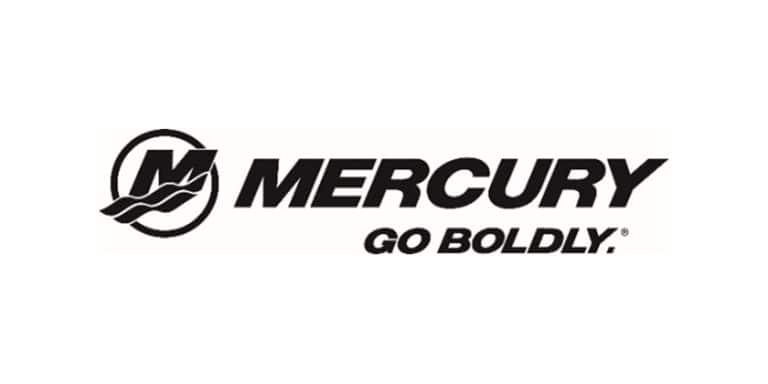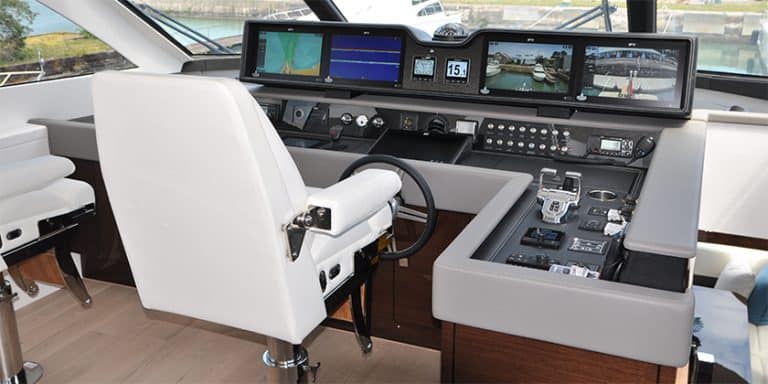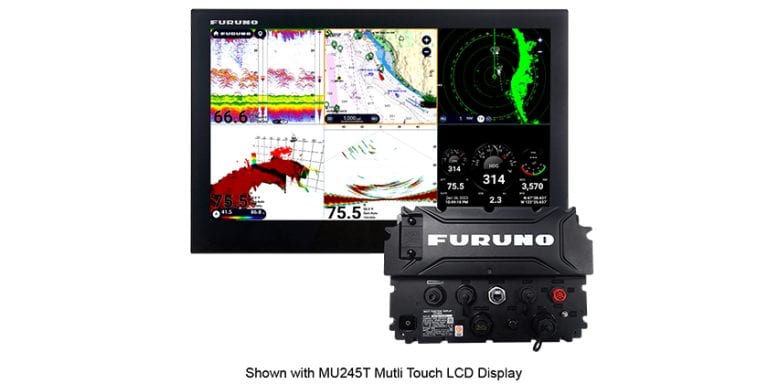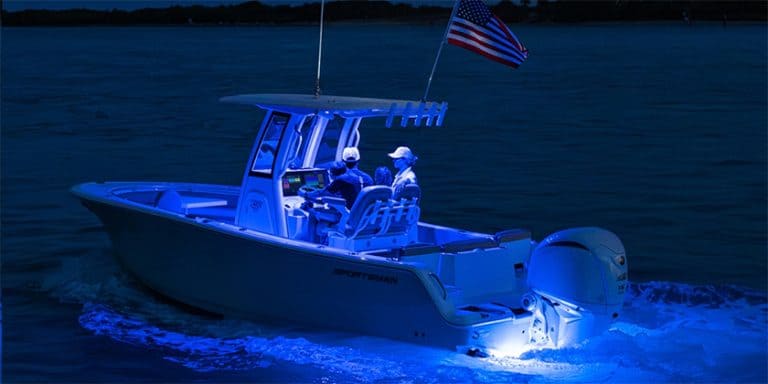Comfort and Efficiency with an Autopilot
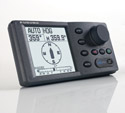
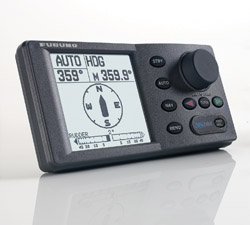 I don't know about you, but I'm a do-it-yourself kind of guy – when I'm driving the boat, I like to drive the boat! I keep a sharp lookout for other vessels, bouys and markers, but also for any kind of debris in the water. I want to be able to take evasive action if I need to and as a general rule, I'm driving a power boat and traveling at speed, not just cruising.
I don't know about you, but I'm a do-it-yourself kind of guy – when I'm driving the boat, I like to drive the boat! I keep a sharp lookout for other vessels, bouys and markers, but also for any kind of debris in the water. I want to be able to take evasive action if I need to and as a general rule, I'm driving a power boat and traveling at speed, not just cruising.
On the other hand, sitting at the helm and trying to steer an accurate course on a long cruise takes focused attention and a steady stream of minor steering corrections that can become very tiring. An autopilot doesn't get tired or bored no matter how long the trip. In combination with the other components of your glass helm; your GPS, electronic cartography, display screen and sounder, an autopilot can steer your course so accurately that you will save fuel and reach your destination more quickly too, leaving you feeling fresh and relaxed.
If you already have an autopilot, you are familiar with the virtues and benefits, but if you've never had one, know that it can make travel by boat a much more relaxing and enjoyable experience. Autopilots are available for sailboats and power boats in pretty much all sizes above 18 feet. Autopilots consist of five main components: a heading sensor; logic and power circuits; PCU; rudder reference unit; and, a drive mechanism (although some of this is changing).
The convenience, improved accuracy and potential time and fuel savings are significant but the cost of an autopilot is also significant because this is one of the most complex systems on board your boat. First, there are several components and these have to all connect from the world of electronics on the helm, to the compass, through various sensors and through the processing control unit which then translates all the input into signals to control the mechanical systems that integrate with your steering gear.
For cruising sailboats to 36 feet, there are autopilot systems that are either tiller-mounted or wheel-mounted at fairly low prices and that are relatively easy to install. But larger below decks systems are needed for larger vessels, or ones that will have to cope with heavy weather. The below decks systems are either linear mechanical drives or hydraulic drives. If you require your tiller-mounted system to manage through a few hours of heavy following seas, you can burn it out. Remember too, these draw quite a bit of electrical power to operate.
Electrical power to operate an autopilot is usually more available on powerboats. For as little as $2,000, there are autopilots with mechanical steering systems for outboard and sterndrive boats down to 18 feet, while hydraulic steering systems for larger twin or multi-engine yachts can reach into the $7,000 range just for the component parts. Of course, autopilot systems scale up for even the very largest commercial vessels!
If you decide to add an autopilot, Ken Harrison at Summerhill CA who represents Furuno and several other electronics brands advises that you should anticipate a similar or slightly greater additional cost to install your new autopilot. This is especially true for sailboats.
The reason is that the drive mechanism has to be solidly mounted and able to exert the required force to steer your boat, especially in demanding and heavy conditions like following seas where it has to counter waves coming in from astern that lift the whole boat and push it sideways.
Not only does the drive mechanism need to be powerful and fairly fast, it has to be very solidly mounted close to the boat's rudder or steering system. In sailboats that were not originally designed for autopilot, engineering and building a new mounting platform can be a major undertaking. Power boats with rudders or drives near the transom may enjoy easier installation.
Ken Harrison commented that if your boat already had a top quality and suitably-sized drive mechanism, you could upgrade the heading sensor at the helm and a few other components fairly easily and inexpensively while gaining the latest operational features. Roy Shipley at CMC Electronics agreed with that, commenting that the drive can be anywhere from a quarter to a third of the total cost of an autopilot system.
It is not uncommon to find that one brand of autopilot can run another brand of drive system, even older ones. If your drive is well installed and in good condition, you may be able to upgrade the rest. That is important for people upgrading their navigation systems because commonly it's best to stay with one suite (or brand) of electronics to ensure that all the pieces are compatible for full functioning.
Reviewing the autopilot systems, we can start with the drive, either hydraulic or mechanical. The rest of the system needs to be able to control the drive and sizing depends on either hydraulic pumping capacity or mechanical power. Sailboat systems are often sized by the boat's displacement.
The second step is to spec out the course computer based on the drive's current requirements. A small sailboat wheel pilot like the Raymarine X5 may draw just 4 amps while a big linear mechanical drive can draw 30 to 40 amps.
The third component is the electric fluxgate compass. This component is often tricky to locate in the boat to avoid being influenced by other electrical sources. It also should be as low and stable as possible – not in the bow for example. A good fluxgate compass has a rate gyro capability that detects pitching, yaw and sideways drift to deliver better information to the computer.
Your fourth component is the rudder feedback sensor that tells the autopilot what the rudder position is. This item is about the size of a hockey puck, has a connection to the steering system and indexes to send back an electric signal that the autopilot can relate back to the compass heading. Some of the newer autopilots use a complex set of algorithms to eliminate the need for a rudder sensor. The benefit is easier installation and therefore lower cost.
The fifth element is the control unit that you see at the helm. This has a screen that displays the numerical course heading and some control buttons. Press the "Auto" button and the autopilot takes over to steer the heading you are on. The "dodge" button suspends autopilot to free you for evasive manoeuvres; some new units automatically disengage if you grab the wheel.
Where people will want to upgrade their old autopilot is to have one that is integrated into the greater suite of navigation equipment on your glass helm. For example, instead of just following a compass heading and suffering windage and drift variations, linking in a GPS enables a "course over ground" program in a series of waypoints. The autopilot can navigate to those waypoints, for greater accuracy and reduced fuel consumption.
Some systems connect the autopilot to the main screen navigation program. Then the autopilot can steer the entire voyage, usually giving a beep as you reach each waypoint and asking confirmation to continue.
Another element specific to sailboats is a wind instrument which can help plot a course that maximizes efficiency in relation to wind direction.
The most significant development though, is that the best new systems can learn.
Every boat is different and will react differently, as the speed or sea conditions change. The new systems can learn the boat's handling characteristics to increase accuracy and safety too. Then, when the autopilot is integrated with the navigational cartography, the best autopilots steer the shortest, most economical course and also achieve the smoothest and most comfortable ride.
You still must keep a close watch, but a new autopilot system can be worth its weight in enjoyment!



